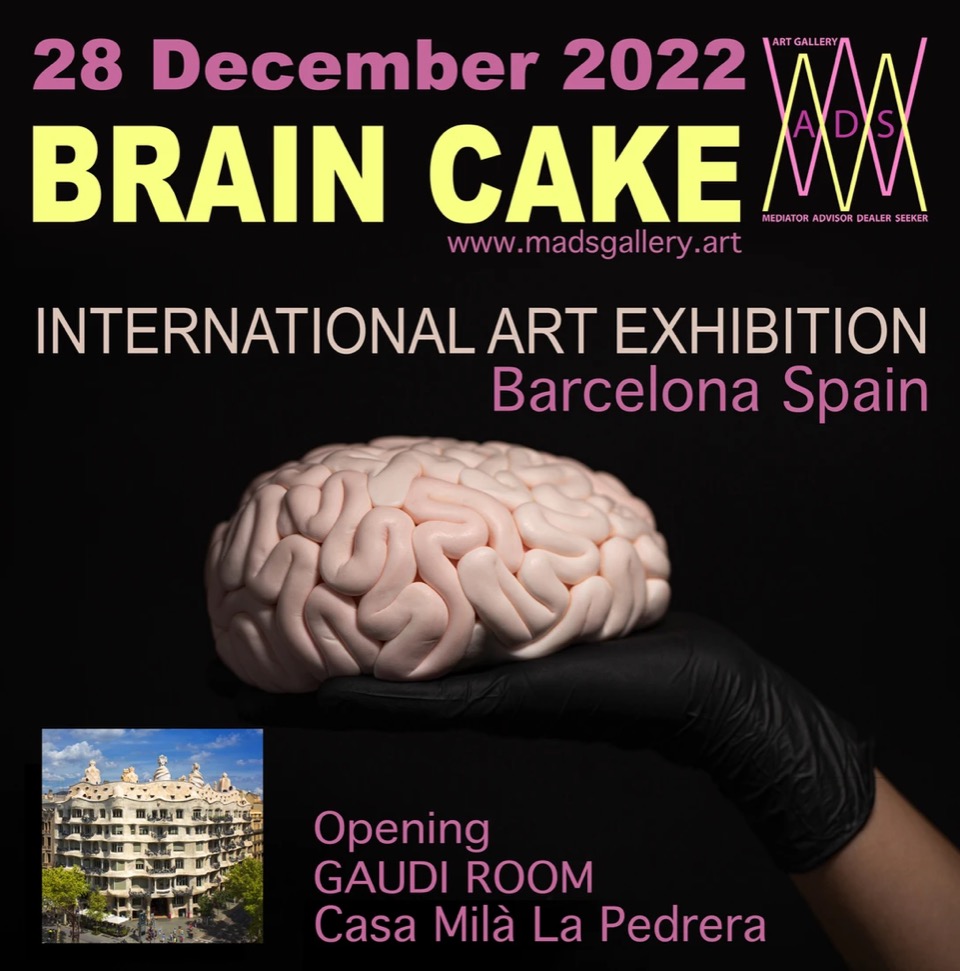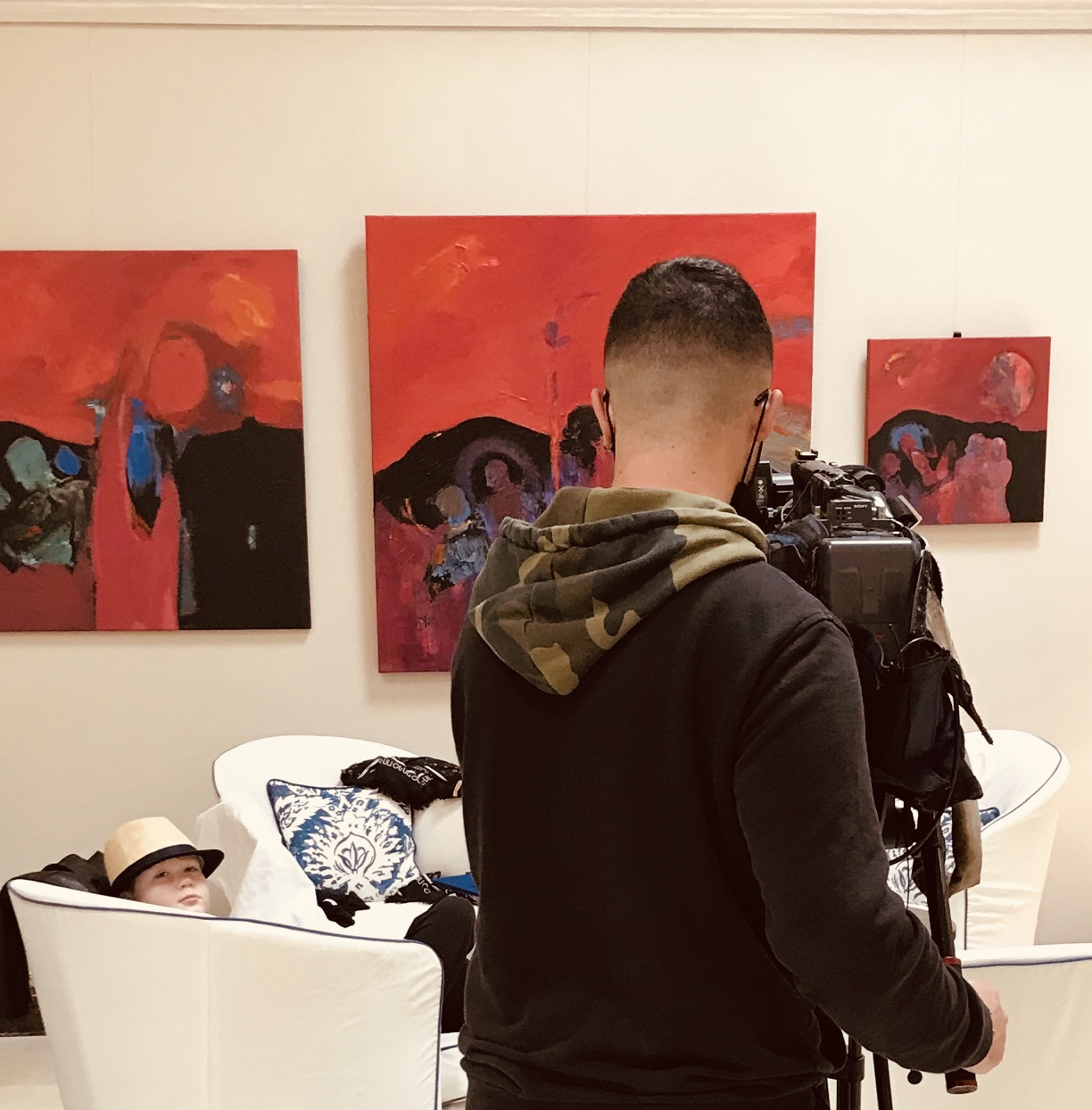
Catching a breath of colour – Times of Malta Interview
Anna Nightingale’s latest exhibition, Breathe, straddles the abstract and representational. Joseph Agius discussed it with her.
JA: Abstract American artist Helen Frankenthaler once said: “You have to know how to use the accident, how to recognise it, how to control it and ways to eliminate it so that the whole surface looks felt and born all at once.” Does accident figure a lot in your work?
AN: Yes, I agree and believe this to be true. I never plan or make studies for my paintings; they don’t work as well when I do. I dislike rigidity and prefer the fluidity of thought transformed into paint. I like the first steps to surprise me because they then lead me into the piece and it becomes exciting. There is more openness and freedom to the process.
When Frankenthaler also writes “an instinctive coalition of hand and eye and controlling intelligence’’ she is spot on. You use instinct and one’s understanding of composition. You will agree I’m sure that any competent artist uses his eye instinctively. What I do know is that I translate my stories on to canvas and I trust from the beginning they will reveal themselves as I work.
I have all these gorgeous colours mixed, my full concentration, no music and, then, off I go. My mind is full of the stories and my eye sees where to place colour, layer upon layer. I add, I eliminate, I add again, I eliminate… the process is magical. It is my brush and the painting, working in unison, totally at one. The canvas is a personality in itself. Sometimes, it almost owns me, other times it works with me. I know when to stop, what to take out, what to leave.
Often, a part you love has to go, it’s tough but the reward after the struggle is always good. You can see that, yes? My works surprise me, lead me on, guide me and then teach me what to do next, where to place the next daub of paint, what my subsequent path is.
JA: Can your paintings be considered as representations of feelings and emotions?
AN: Absolutely. Throughout my life, I have always painted what I feel. As a writer expresses herself through her pen, I do the same with my brush and paint, transforming form and colour into a meaningful response to my life’s direction.
My colleague, artist Gabriel Buttigieg wrote: “Her paintings are a literal and metaphorical abstract rendition of the spaces which carve her life and her humanity. Transcendence and an element of aura are the fundamental starting point for the viewer…”

JA: Was abstraction a natural development from the figurative or was it a path that transcended representation? I have noticed a nod towards the representative in some of your paintings.
AN: I am not sure you would say it’s a natural development. I painted more figuratively when I was younger and, yes, my work is today considered abstract. However, I would consider myself as flitting between the two worlds of figurative and abstraction. It is energy, emotion, movement, full body engagement. I am essentially a colourist and I use colour to portray stories. In this recent series of Breathe, there is most certainly a nod towards the representative and this is where I find myself today.https://2ba93c1d94f470d48036cbe8882453e5.safeframe.googlesyndication.com/safeframe/1-0-38/html/container.html

JA: Your work strikes me as lyrically abstract, demonstrating a musical quality in its chromatic values. Frankenthaler was a foremost protagonist of this style of painting, imbuing her abstraction with symphony-like qualities. Do you feel that this defines your work too?
AN: My son’s father, Mike Hedges, is a music producer. I think he nailed it when he recently wrote in the catalogue accompanying the exhibition: “The spectrum of light and sound are intrinsically connected as are the landscapes they create.” For more than a decade, we shared a music and art studio and I can safely say music and art, like poetry, share the same symphony. We are artists, we might paint, we might sing or play instruments or record music but what we all create is lyrically abstract.

JA: The American mid-century art scene boasts of several superb female protagonists like Frankenthaler herself, Joan Mitchell, Lee Krasner, Grace Hartigan and Elaine de Kooning. Do you regard any of these artists as influences or does your abstraction originate from a different world?
AN: These women are incredible but they are not my influences. I can’t say I have ever been hugely influenced by any single artist. I always feed on the visual, on what I see and feel all around me. You see something, digest it and then it emerges differently. We dip into art history and the lives of our contemporaries throughout our careers, our entire lives. I’m stimulated and encouraged by what I am exposed to and that, in turn, motivates and inspires me as an artist at work. I believe strongly in what I do and know in my heart that this is my path.

JA: Your exhibition’s mission statement claims: “It’s [the exhibition is] about second chances after a series of life-threatening events. She is interested in the other side of fear, facing death and rising.” Was this what Kandinsky was about, by attempting to find the spiritual in art? Does art redeem you?
AN: Isn’t all art and music spiritual? I am a storyteller and, yes, this collection has involved the challenges life threw at me. I have been at death’s door and perhaps this experience comes out in my work (perhaps it doesn’t). It’s not something I actively set out to paint, however, these moments are what define us as humans. We are not so good at hiding our emotions. Like songwriters and poets, we lay our feelings on the line.
We are honest, sensitive and, of course, that brings with it a certain vulnerability. Painting is never easy for me, it is often hard graft, but it is what I do.
My long-time friend and curator, Lara Bugeja had this to say: “This time round, she charts new territory, documenting an extremely personal journey by using recent experiences to really explore what it means to be, what it means to climb onwards and upwards in the face of adversity.”
We are, after all, travellers in this world. We are here to learn lessons and, of course, to leave our mark before we depart.

JA: Was exhibiting at the Malta Postal Museum in Valletta and in Gozo simultaneously meant as an artistic statement or do you envisage them as complementary to each other?
AN: It was joyfully and purely coincidental (though I have doubts about the whole concept of coincidence)! I was offered both shows at a time when I was picking myself up from an all-time low.
At the time, I saw that my life needed to move on, to take off in a new direction. Although I had resumed my painting rather sporadically, I also felt that very primordial desire to stand in front of a canvas, tools in hand and do what I do best in a truly committed way.
Here was a wonderful opportunity to trust the opportunity before me and to remind myself to be in the eternal present. Fortunately, it was as simple as that.
The exhibitions do complement one another and the flow between them is constant, connected and beautiful. I am extremely grateful. I’ve had some wonderful support along the way, not least from my sponsor, PwC Malta.
Breathe remains open till January 6 at the Malta Postal Museum in Valletta on weekdays from 10am to 4pm and on Saturdays from 10am to 2pm. COVID-19 restrictions apply.







